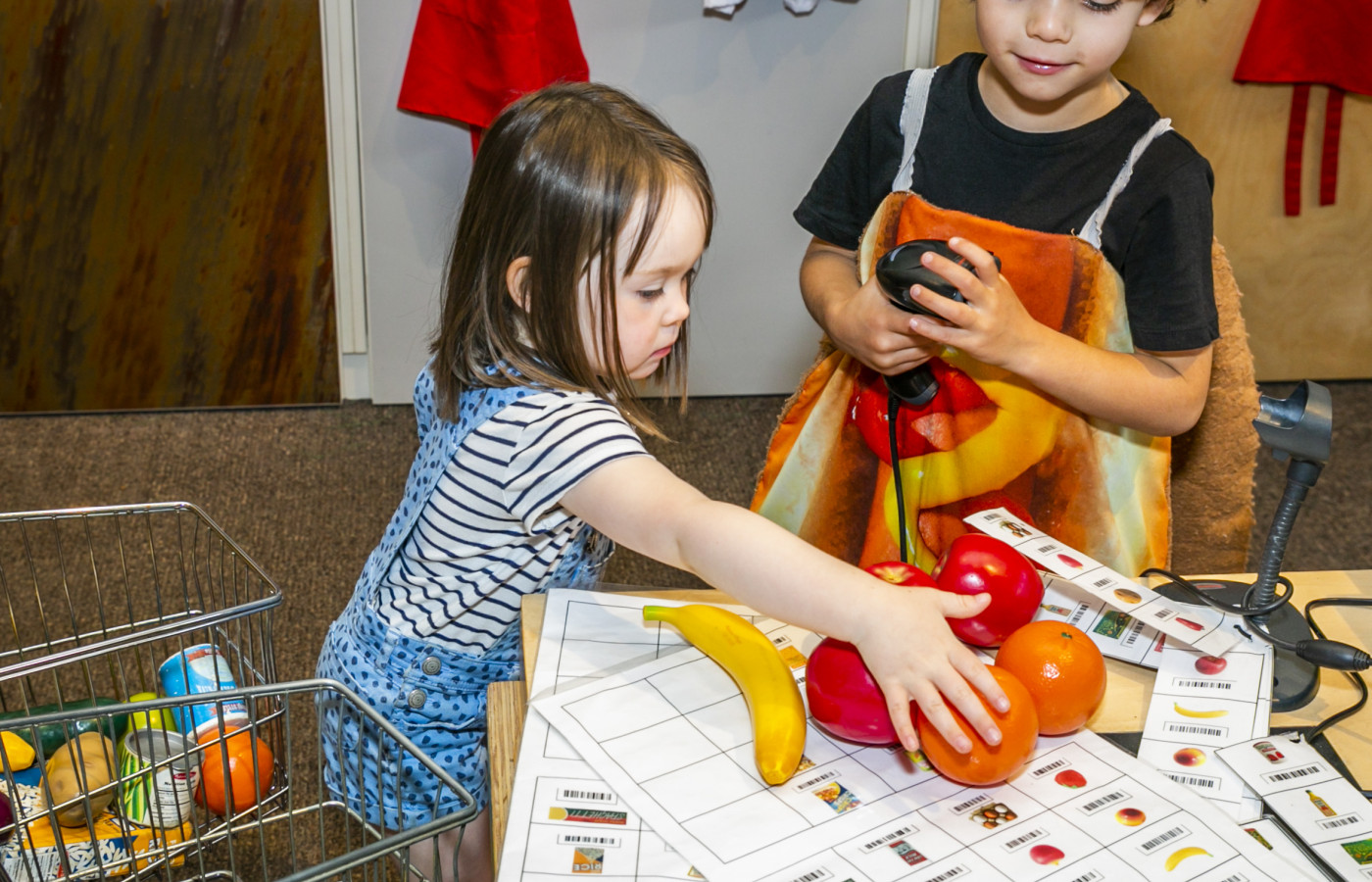Categories at the supermarket

Categories at the supermarket
Sorting the grocery list into categories
Materials Required
- paper
- pencils/pens
coloured pencils
Play experience profile
-
Age:
-
Min Playtime15 - 30 Minutes
-
Skills
-
Energy LevelActive play
-
Messiness Rating
-
EYLF Outcomes
Play Experience Preparation
Write your grocery listExperience Steps
- On the piece of paper, with your child, brainstorm and write down the different sections of the grocery store e.g. fruit, vegetables, bakery, deli, dairy, baking etc.
- Ask your child to draw a picture to represent each section for example an apple next to the word fruit.
- Read through your grocery list together and sort each item into a category.
- Encourage your child to have a turn writing or drawing a picture of the item. If your child is interested, you may write the word for them to reference or talk them through the word - letting them know what letter comes next.

What to talk about, or questions to ask during the experience
- Where do you think we would find the bread?
- I wonder where the salt might be?
- What else might near the flour?
Build on this...
- Take your grocery list to the store and have your child tick off the items, noticing if the item was where you predicted or somewhere else. If it was somewhere else discuss why this might be, what is similar about that item and the items it is near.
- Categorising the laundry. Have your child help sort the laundry into baskets - lights, darks and colours. Once the washing is clean your child may help sort the washing according to who it belongs to - a pile for mum, dad, sister, brother, themselves.
WHO guidelines for physical activity and sedentary behaviour
Provide evidence-based public health recommendations for children, adolescents and adults on physical activity.
Learn more
Provide evidence-based public health recommendations for children, adolescents and adults on physical activity. Learn more
This play experience becomes more physically active if you take your child to the grocery store and allow them to walk through the aisles.
EYLF Outcomes
The Early Years Learning Framework has been designed for use by early childhood educators working in partnership with families, children’s first and most influential educators.
View PDF
The Early Years Learning Framework has been designed for use by early childhood educators working in partnership with families, children’s first and most influential educators. View PDF
- Children begin to understand how symbols and pattern systems work
- Children develop dispositions for learning such as curiosity, cooperation, confidence, creativity, commitment, enthusiasm, persistence, imagination and reflexivity
- Children interact verbally and non-verbally with others for a range of purposes
EYLF Principle
Principle 3: High expectations and equity. Children progress well when they, their parents and educators hold high expectations for their achievement in learning.
EYLF Practice
Practice: Intentional teaching. Intentional teaching is deliberate, purposeful and thoughtful. They use strategies such as modelling and demonstrating, open questioning, speculating, explaining, engaging in shared thinking and problem solving to extend children’s thinking and learning.
Playful and meaningful experiences with categorising lays the foundation for sorting and representing data (Montague-Smith & Price, 2012).
Montague-Smith, A., & Price, A.J. (2012). Mathematics in early years education (3rd ed.). New York: Routledge.
Author:


